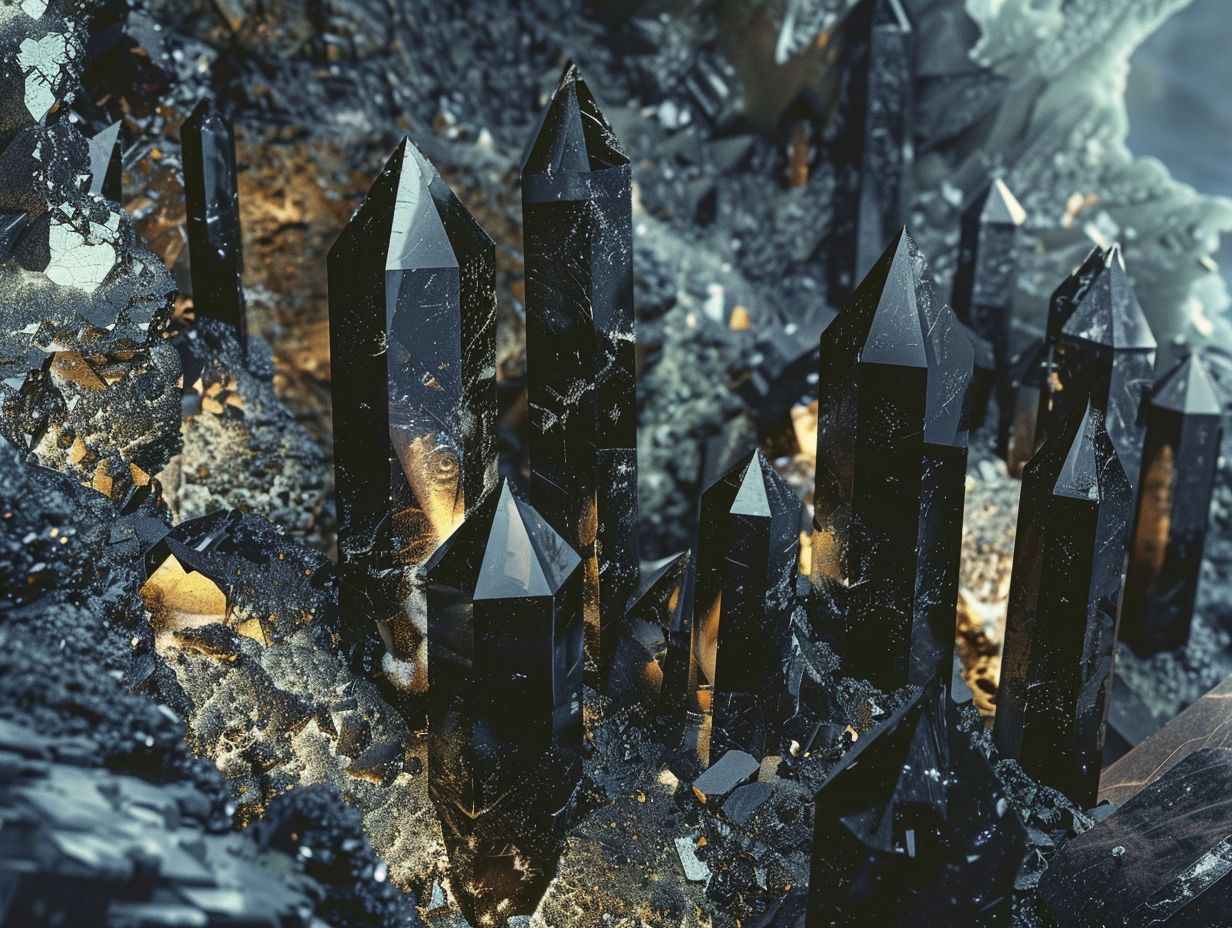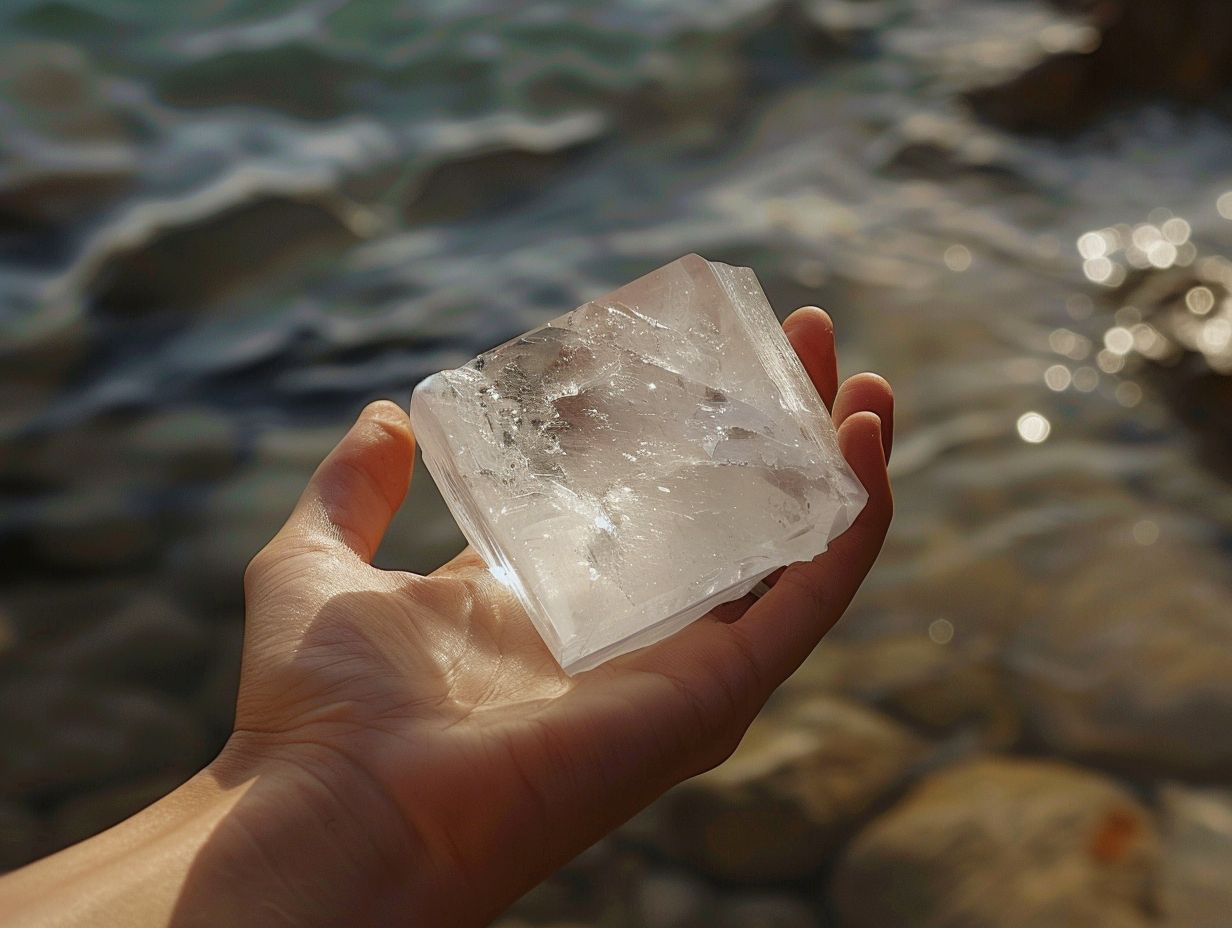
The Geological Wonders of Black Crystals: Formation and Composition
The article delves into the geological aspects of black crystals, exploring their formation and composition. It discusses the intricate geological processes and conditions contributing to the development of these gems, as well as the diverse minerals and chemical properties that render them distinctive.
The content unveils the various types, varieties, and characteristics of black crystals, shedding light on their practical and metaphysical applications.
What are Black Crystals?
Black crystals are extraordinary geological formations that enchant observers with their distinctive beauty and fascinating characteristics. These crystals are typically created through intricate geological processes, displaying a striking dark coloration that distinguishes them from other mineral structures.
Their captivating allure stems from their enigmatic depths that appear to absorb and refract light in a nearly mystical manner, establishing an air of refinement and sophistication. The juxtaposition between the deep black shade and any accompanying tones or patterns enhances their visual appeal, rendering them a popular choice for jewelry and ornamental pieces. Many individuals attribute metaphysical attributes to black crystals, such as grounding and protection, further intensifying the allure they hold for both gemstone enthusiasts and spiritual practitioners.
Formation of Black Crystals
The formation of black crystals is a sophisticated process that entails intricate geological mechanisms like crystallization and precipitation. These crystals are the outcome of precise conditions and chemical interactions occurring within the Earth’s crust.
Geological Processes and Conditions
Black crystals are the result of various geological processes and conditions, each contributing to their distinct structure and appearance. These natural formations serve as a testament to the intricate geological phenomena that take place deep within the Earth.
The development of black crystals is influenced by a combination of factors ranging from the extreme heat and pressure in the Earth’s mantle to the gradual cooling process that facilitates the formation of minerals into crystals. Additionally, the presence of specific minerals like carbon or iron further shapes the color and composition of these crystals. Geological events such as volcanic activity, tectonic movements, and sedimentation also play a significant role in the formation of black crystals, showcasing the dynamic nature of Earth’s processes that give rise to these enchanting natural marvels.
Composition of Black Crystals
The composition of black crystals is a harmonious amalgamation of rocks and minerals, meticulously organized within a crystal lattice structure. These intricate compositions delineate the distinctive properties and characteristics of black crystals.
Minerals and Chemical Properties
Black crystals display a captivating array of minerals and chemical properties that enhance their visually striking appearance and structural integrity. The exploration of these minerals and their compositions falls within the domain of mineralogy and crystallography.
These black crystals commonly encompass minerals like quartz, tourmaline, obsidian, and hematite, each contributing distinct characteristics to the crystal’s overall structure. For example, the inclusion of hematite imparts the crystals with their characteristic metallic luster, while quartz introduces clarity and enhances energy levels.
A comprehensive understanding of the mineral composition of black crystals is imperative for both gemologists and geologists. It offers valuable insights into the processes of their formation and potential applications across various industries, encompassing jewelry manufacturing and energy healing practices.
Types of Black Crystals
Black crystals are available in diverse varieties, each characterized by unique crystallographic features that have captivated geological research for many years. These specific types highlight the wide array of formations present in the domain of black crystals.
Different Varieties and Characteristics
The various types of black crystals present distinct characteristics that are influenced by processes such as crystal growth and geological findings. An in-depth examination of these geological processes illuminates the complex formations found within black crystals.
These geological discoveries have yielded profound insights into the varied growth patterns of black crystals. Through the analysis of mineral composition and the environmental conditions conducive to crystal formation, researchers have discerned the specific factors that shape their development.
A comprehensive understanding of crystal growth is essential to grasping how these black crystals attain their unique properties and structures. The investigation into geological processes has unveiled the intricate journey these crystals undergo, providing a glimpse into the intricacies of their formation.
Uses of Black Crystals
Black crystals are utilized in a variety of practical and metaphysical applications, showcasing distinct properties that serve a wide array of purposes. These crystals are esteemed for their adaptability and importance across different fields of application.
Practical and Metaphysical Applications
Black crystals are highly sought after for their practical and metaphysical applications, serving a range of purposes from mineral exploration to the crafting of exquisite gemstones. Their unique properties and classifications render them valuable commodities across various industries.
In the realm of mineral exploration, black crystals play a crucial role as indicators of specific geological formations, owing to their distinctive compositions. This characteristic aids geologists in the identification of potential mineral deposits. Furthermore, the production of gemstones benefits significantly from black crystals, as they can be expertly cut and polished to fashion magnificent pieces for use in jewelry and ornamental settings. Within mineral classification processes, black crystals are frequently employed as reference points to facilitate comprehension of the overall mineralogical composition in a given area, thereby offering valuable insights into the geological history of the Earth.




No Comments